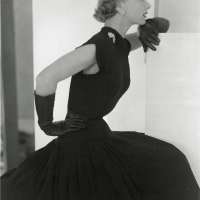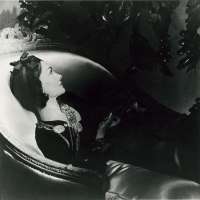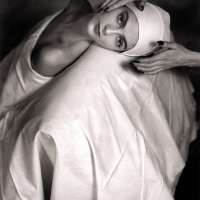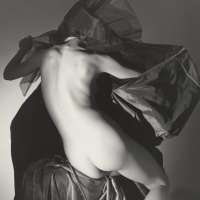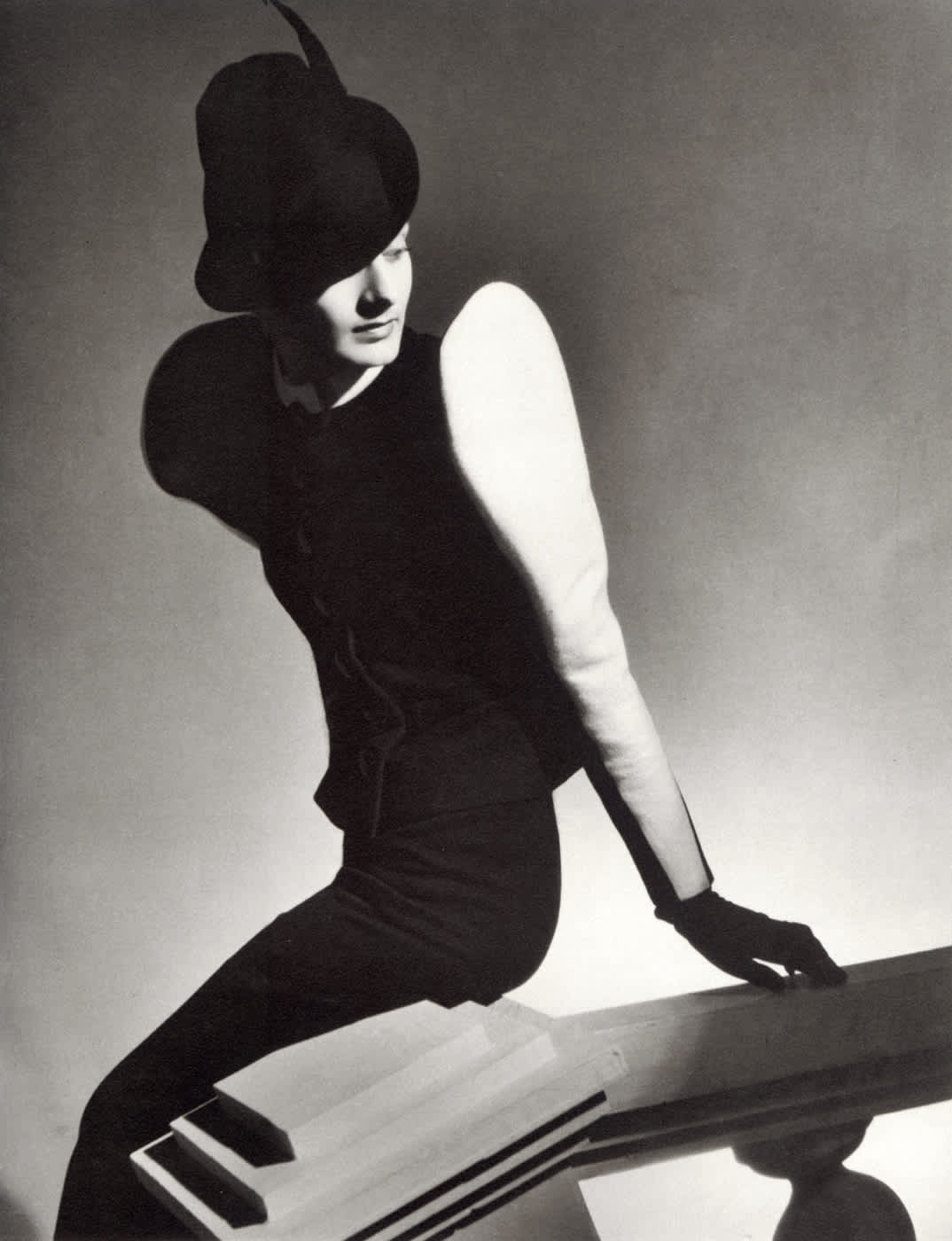

Horst P. Horst
White Sleeve, 1936
Horst P. Horst
Horst P. Horst Biography Horst P. Horst (1906-1999) was in Weissenfels-an-der-Salle, Germany. Originally channeling inspiration for shooting fashion from Baron George Hoyningen-Huene, Horst P. Horst eventually developed his own style, particularly manipulating light to highlight subjects’ features. By 1931, Horst P. Horst was shooting regularly for French Vogue, as fostered through a friendship with Hoyningen-Huene. Eight years later he made one of his most famous works, Mainbocher Corset, which featured a woman’s back strapped into a corset and published in Vogue. Horst P. Horst primarily worked in the studio, sometimes taking days to strike the right balance of light and shadow to make his portraits. His portraiture style, often showing the models as anonymous canvasses for the clothing displayed, summons luxury and glamour—an aesthetic doubled-down by Horst P. Horst’s “New York glitterati” crowd. Eventually a more natural approach to portraits came into vogue, prompting his move into advertising work for clients like Calvin Klein. Some of his most famous portraits include Coco Chanel, Andy Warhol and Marlene Dietrich, among others. Horst P. Horst is still remembered as one of fashion photography’s leading pioneers of the 20th century. Born the youngest of two boys to a hardware merchant, the arts always attracted Horst P. Horst. He studied architecture in Hamburg as a young man then apprenticed in Swiss-French architect Le Corbusier's studio in Paris in 1930. There he befriended Hoyningen-Huene and, feeling inspired, Horst P. Horst rerouted for a new career path in photography. He ensconced himself in a charismatic social circle in Paris, including friends like interior designer Jean-Michel Frank, set designer Bebe Berard, writer Janet Flanner and Chanel. Over time, Horst. P Horst honed a technique similar to Greek stature, literally shedding dramatic light on human curves. It’s not surprising such a deliberate approach earned him the title of simply “Horst.” Eventually, in 1935, Horst P. Horst would replace his friend at French Vogue as chief photography. He immigrated to the United States to become a citizen when War World II broke out, formally changing his name to avoid confusion with the Nazi official Martin Bormann. At the suggestion of Vogue editor in chief Diana Vreeland, Horst P. Horst worked as a traveling photography shooting international socialite culture for Vogue, Vanity Fair and House & Garden between 1961 and 1975. Horst P. Horst’s photography is often heavily stylized, projecting ‘30s allure with keen attention to detail, such as a dirty ashtray or a peripheral wine carafe. He also released a number of photography collections, including Photographs of a Decade (1945), Patterns from Nature (1946) and Salute to the Thirties, with Hoyningen-Huene (1971). By the late ‘40s, Horst P. Horst had built a Moroccan-style house on a plot of land in Long Island; he heavily styled the interior to double as a shooting location for Vogue models as well as famous friends like Greta Garbo. Although Horst’s style fell out of style in the 1950s, the luxury fashion resurgence of the 1970s reinvigorated interest in his editorial fashion work. He received the International Center of Photography Master of Photography Infinity Award in 1996. Horst P. Horst continued making photographs until 1991, mostly focusing on shooting interiors towards the sunset of his working career. He died at 93 in 1999 in his home in Palm Beach Gardens, Florida. Horst P. Horst’s photography has been shown at ICP, La Plume D'Or in Paris, and the Victoria and Albert Museum, among others.

